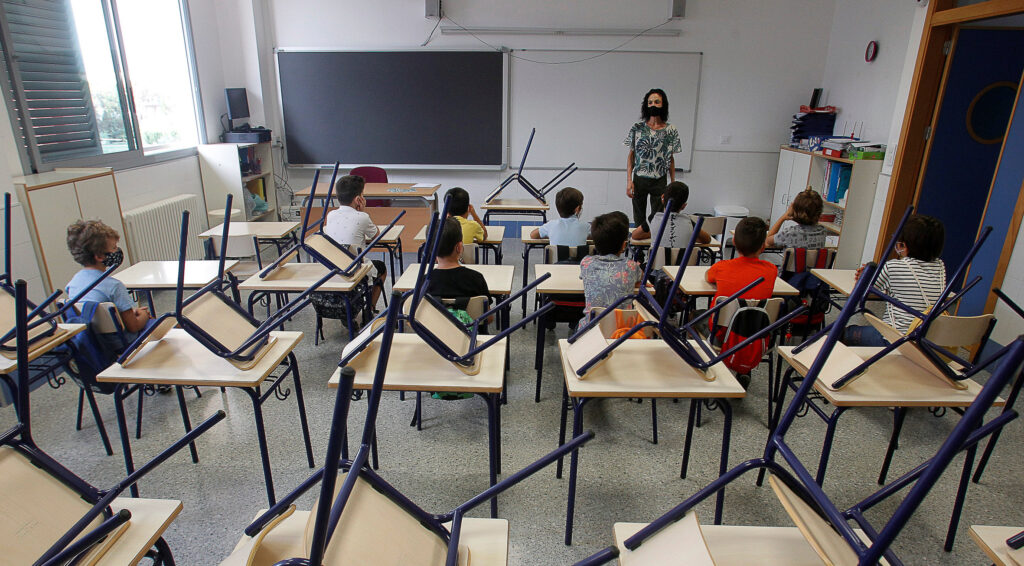24.11.2021 - 09:56
|
Actualització: 24.11.2021 - 10:56
Spain’s Supreme Court has rejected an appeal from the Catalan Ministry of Education against a ruling that said that a minimum of 25% of school instruction in Catalan public schools must be given in Spanish. For 40 years, Catalan has been the language used in classrooms in order to protect it as a minority language in Spain– yet recently, unionist parties such as the People’s Party and Ciudadanos have been lobbying for a higher presence of Spanish in obligatory education.
The Supreme Court has rejected the appeal filed by the Ministry of Education and has confirmed the ruling that establishes a quota of 25% of Spanish in schools, as explained by the Minister of Education, Josep Gonzàlez Cambray. He responded angrily to the court ruling on Tuesday afternoon: “This is an attack on the foundations of the Catalan school perpetrated by a court far removed from the sociolinguistic reality of the education centres”.
Cambray also affirmed that schools “must continue to work as they have until now and must not make any change in their language projects.” He also explained that he had spoken to the Spanish minister of education, who told him that Catalan schools had to comply with the law and guarantee the learning of both languages.
Decline in use of Catalan in schools
Recent figures released by the Catalan education Ministry reveal that 47% of teachers always or almost always speak in Catalan to 4th year secondary school students – that is significantly lower than 15 years ago, when 63% did. This is especially remarkable as Catalan is the working language at schools in order to protect it and avoid the society being split in two separate linguistic communities.
When Catalonia recovered its self-rule in the late 1970s after 40 years of a fascist dictatorship, its new authorities decided that classes in Catalan, rather than a choice between Catalan and Spanish, would ensure that students end their studies speaking both languages – considering that the latter is learned in society because it is the most widely used one and is studied as a foreign language at school.
After 40 years of this Catalan immersion system, the language is understood by 94.4% of the country’s population. Some 81% can speak it, 85% can read it and 65% can write it, with 64% saying they have a good command of all skills – all abilities are mastered by 97% of the population in Catalonia or more when it comes to Spanish, which suggests the system works in order to guarantee a high level of both tongues.
39% of pupils often use Catalan with teachers
Yet, the study published on Thursday suggests that this pillar for Catalan’s survival as a minority language might be trembling. According to the survey, made to some 50 schools towards the end of the 2020-2021 course and only to 4th year secondary school (ESO) pupils, only 39% of students always or almost always speak in Catalan to their teachers in classrooms, which means a 17-point compared to 2006. During group activities, only 21% of pupils often use it, which means a sharp decrease compared to 2006, when 67% of them did.
The figures reflect the same trend as that of a Barcelona local council study published in August, which stated that 28.4% of 15- to 34-year-olds in the capital used mostly Catalan (62.1% for Spanish), down from 35.6% in 2015 (56.5% for Spanish). Another recent study, by the Plataforma per la Llengua, an NGO that defends the use of Catalan language, states that around 4.5 million people usually speak Catalan, half a million less than in 2005.
Spanish audiovisual law
The figures come amid a debate over the use of Catalan in the audiovisual sector – pro-independence Esquerra party is one of the entities lobbying for a quota in streaming platforms in the Spanish law that is being prepared in Madrid. Indeed, Esquerra helped the Spanish 2022 budget bill go ahead in its parliamentary process in exchange for presence of the language in the audiovisual.


